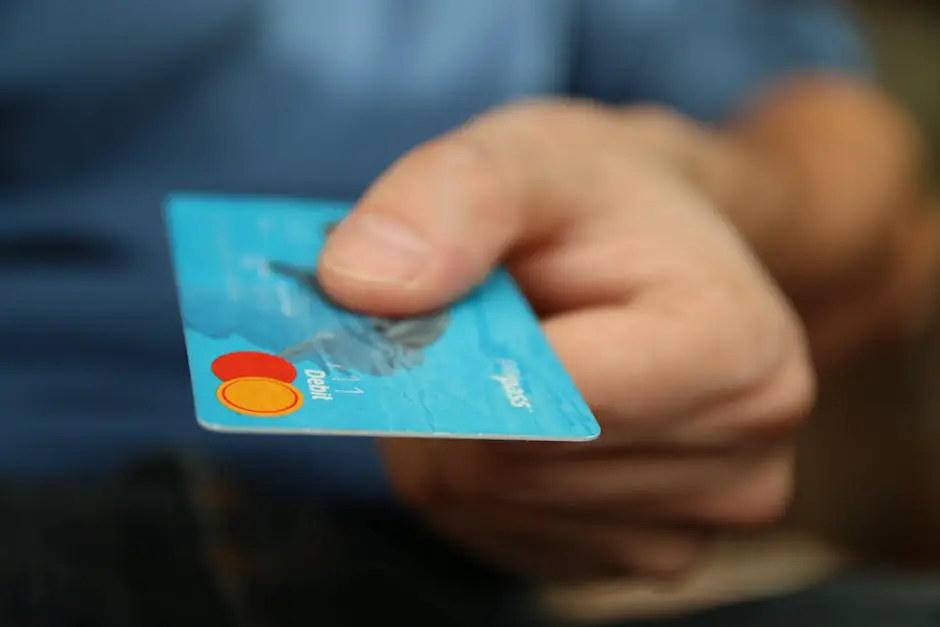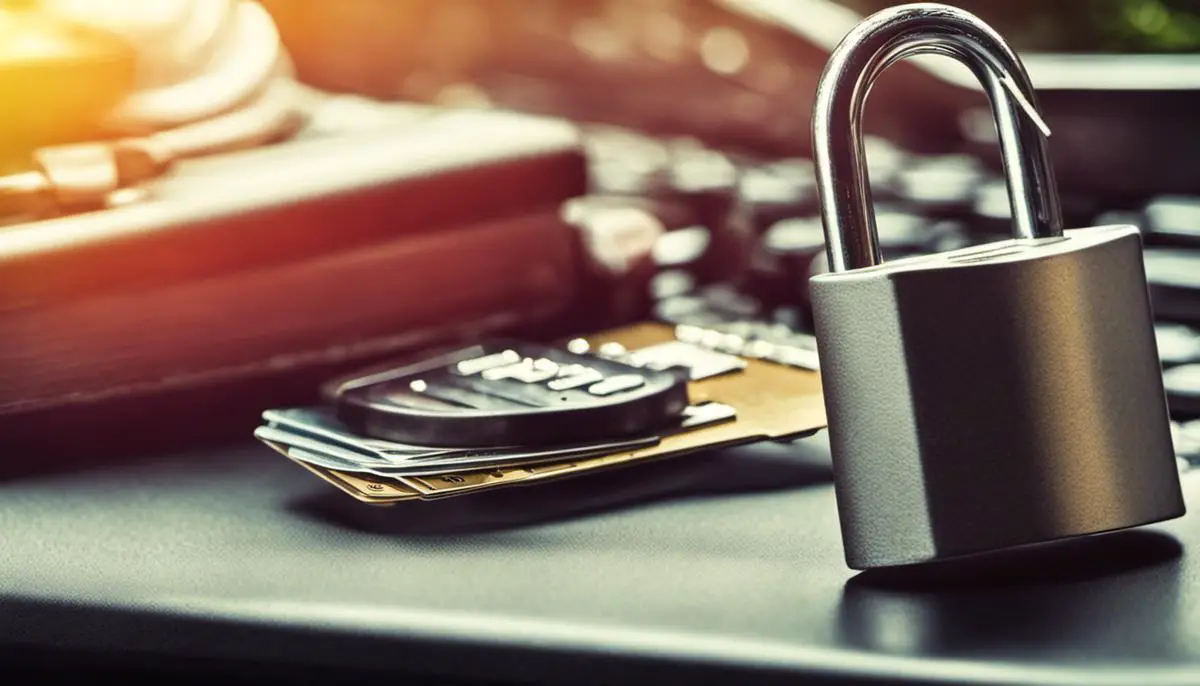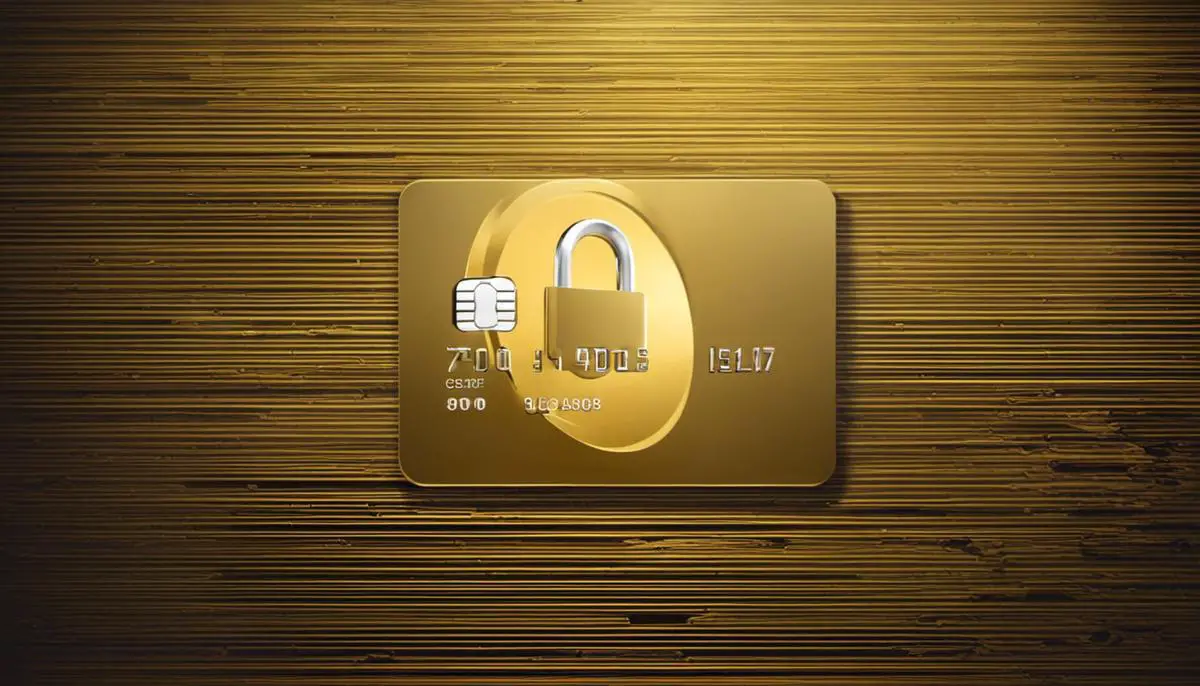Credit card fraud, particularly login fraud, is an unsettling phenomenon that has been rising, especially in the digital age. This scam not only threatens the financial economy but also the individual cardholders who face the significant repercussions of such fraudulent activities. Consumer awareness and understanding can play a crucial role in effectively combating this issue.
My expert guide and discussion provides a comprehensive view of credit card login fraud, its various types, impacts, the preventative measures that can be taken, and also the legal support that victims can avail.
Understanding Credit Card Login Fraud
Understanding Credit Card Login Fraud: The Concept and Its Evolution
Credit card login fraud, more commonly known as credit card fraud, is a deceptive practice where fraudsters misuse a cardholder’s credit card information for unauthorized transactions or theft. Over the years, card frauds have evolved from simple card thefts to much more complex and sophisticated scams in response to changing technology and consumer behavior.
Technological advancements had led to the inception of plastic money – credit and debit cards. This move inspired a new breed of criminals who began to misuse stolen card data for unauthorized transactions. With the digitalization of financial transactions and internet banking, credit card fraud evolved further into two primary types – card-not-present (CNP) fraud and card-present fraud.
CNP fraud, which has seen a significant rise in the last decade, typically occurs during online transactions, where the fraudster doesn’t need physical possession of the card. On the other hand, card-present fraud involves fraudulent activities using a physically stolen or cloned card at payment terminals.
The Impact of Credit Card Login Fraud on Financial sector and Individuals
Credit card login fraud has significant implications for both individual consumers and the broader financial sector. On the individual front, credit card fraud can lead to significant financial losses and a tedious process of fraud claim settlement. In addition, it undermines trust in the reliability and security of digital financial transactions.
For the financial sector, such fraudulent activities can cause significant monetary losses, damaging their brand image and eroding public trust in banking services. It necessitates spending considerably on security infrastructure, fraud detection, prevention mechanisms, and anti-fraud education campaigns.
Procuring Cardholder Information and Misuse: Tactics of Fraudsters
Fraudsters use several elaborate techniques to obtain credit card information. The most popular methods are phishing, skimming, and data breaches.
Phishing involves sending deceptive emails or texts that look conspicuously similar to authentic communication from a bank or credit card company. They trick the cardholder into revealing their credit card details, login credentials, and other sensitive information.
Skimming involves capturing credit card details using a special device fitted to a physical payment terminal like ATMs.
Data breaches involve hacking into a company’s database to steal customer’s credit card information. These stolen details are then used to make unauthorized transactions or sold on the dark web.
A point to note here is that just as technology evolves, so do the tactics adopted by fraudsters. Therefore, staying informed about the changing nature of credit card fraud is the first step to financially secure oneself from possible scams.
Understanding the Size and Implication of Credit Card Scams
The Federal Trade Commission reveals an unsettling fact that credit card fraud was the most reported type of identity theft in the U.S. in 2019. This far-reaching scam cripples millions of innocent individuals globally each year. With the exponential rise in e-commerce and digital transactions, incidents of credit card fraud relentlessly increase.
What’s worse is the domino effect of these fraudulent activities, where financial institutions often shift the loss onto consumers through augmented service fees. It gives a clear portrait of why all parties need to actively participate to curb this modern-day menace.

Types and Mechanics of Fraudulent Activity in Credit Card Login
Phishing: Fraudsters’ Preferred Approach
One of the most common tools in the digital fraudster’s shed is Phishing. In this devious tactic, criminals impersonate a responsible institution, perhaps your bank, and trick you into providing your credit card login details. They achieve this by sending convincing emails or texts – complete with a call to urgent action. The unsuspecting victim, driven by the sense of urgency, logs in through the link provided, unknowingly stepping into a trap. This link leads to a deceptive website specifically built for nefarious purposes – capturing and misusing your credit card details.
Carding: Unauthorized Card Details Verification
Another type of fraudulent activity in credit card login is carding. This term refers to the process of verifying the validity of stolen card data. Fraudsters use dedicated websites or software to validate stolen credit card numbers. Often, they execute small transactions to test the card’s validity, enabling them to use or sell functional card data without immediate detection by authorities or cardholders.
Skimming: Data Theft through Physical Means
Unlike phishing and carding that leverage digital platforms, skimming is a method of fraudulent activity that involves physical devices known as skimmers. These devices are installed covertly on ATM or Point-of-Sale (POS) machines to ‘skim’ and store credit card information directly from the card’s magnetic stripe when transactions occur. Later, this data is extracted and used for unauthorized transactions or sold on the deep web.
Malware Attacks: Silent Credit Card Information Harvesting
Malware is another powerful tool that fraudsters use to gain unauthorized access to credit card information. This malicious software can infiltrate a computer system through seemingly harmless downloads or compromised websites. Once inside a system, malware like keystroke loggers can record a user’s keystrokes, capturing sensitive information such as usernames, passwords, and credit card details. Similarly, spyware can monitor and transmit a user’s online activity, giving fraudsters critical data for their illicit activities.
Real-life Cases Highlighting The Issue
Cases of credit card login fraudulent activities are plentiful. For instance, in 2019, a major federal bust exposed an organized group involved in carding activities, resulting in the confiscation of millions of dollars in assets bought with stolen credit card data. Similarly, notorious phishing schemes have tripped up even the most tech-savvy individuals. One such case was the massive phishing attack in 2011, where millions of deceptive emails purported to be from the IRS were sent to gather recipients’ financial data.
In today’s digital age, it’s crucial for the public to fully grasp the nature of fraudulent activities, particularly in the realm of credit card login. Rigorous precautions such as careful examination of received emails and site URLs, employing proven security software, along with regularly updating passwords can play a significant role in defending against these deceptive acts.

Impact and Consequences of Credit Card Login Fraud
Diving Deeper into the Mechanics of Credit Card Login Fraud
This form of deceit, credit card login fraud, essentially amounts to identity theft in which unauthorized individuals gain entry to your credit card’s linked online account. Disturbingly, these culprits employ a variety of tactics including hacking, phishing, or deploying malware. In other cases, they can use stolen user details procured from data breaches or through unprotected online transactions.
Financial Implications of Credit Card Login Fraud
The direct financial impact of credit card login fraud can be stark and immediate. Unauthorized transactions can quickly add up, sometimes reaching into the thousands of dollars. Even though credit card companies will typically reimburse fraudulent charges after an investigation, the process could potentially tie up your funds for weeks, causing a disruption in regular spending and bill payment practices.
Credit Score Damage Through Fraudulent Activity
Credit card login fraud can significantly damage credit scores. When fraudsters gain access to a credit card account, they tend to rack up high charges, pushing the card over its credit limit and severely lowering the cardholder’s credit utilization ratio. The credit utilization ratio, or the amount of available credit being used, is a central piece of the credit score computing algorithm. Consequently, high charges by fraudsters could lead to a significant drop in the victim’s credit score.
Identity Theft and Credit Card Login Fraud
Identity theft issues often arise from credit card login fraud. Once a hacker gains access to a credit card account, they can use the personal information found within to compromise the victim’s identity. This could include opening new credit card accounts or securing loans in the victim’s name, leading to long-term financial instability and compromised personal security.
Impact of Credit Card Login Fraud on Businesses
Businesses also suffer under the weight of credit card login fraud. Each fraudulent transaction can result in a chargeback, whereby a customer disputes a transaction, leading to the loss of sales revenue. Furthermore, businesses also risk losing customer trust and goodwill, as they may be seen as incapable of effectively securing their clients’ personal and financial information.
Preventing Credit Card Login Fraud
While credit card login fraud can have severe consequences, it is largely preventable. Measures such as regularly updating passwords, avoiding unsecure online transactions, and closely monitoring credit card statements can significantly reduce the risk of this form of identity theft. Both individuals and businesses should consider investing in quality cybersecurity software to further protect against these potentially devastating attacks.
Dealing with Credit Card Login Fraud
Reacting promptly to signs of credit card login fraud can minimize damage. Contacting your credit card company immediately upon noticing suspicious transactions or changes to personal information can prevent further unauthorized activity. Examining credit reports regularly and considering services like credit monitoring can also help catch fraudulent activity in the early stages.
The Role of Credit Card Companies in Fraud Prevention
Credit card companies are chiefly involved in the prevention of credit card login fraud through measures designed to detect and ward off suspicious activities. They possess systems that monitor for irregular spending patterns and confirm the identities of users before providing access to accounts. Despite these efforts, the responsibility also falls on individuals to keep their online information guarded and secure.

Preventative Measures against Credit Card Login Fraud
Grasping the Concept of Credit Card Login Fraud
This type of fraud, known as credit card login fraud, arises when individuals’ login details fall into the wrong hands, enabling unauthorized transactions or identity theft. Given the significant financial and emotional impact, including potential damage to one’s credit score, understanding and preventing this sort of illegal action is critical, especially in our technologically advanced era.
Using Secure Networks
One of the foremost strategies in preventing credit card login fraud is using secure networks. Make sure to only access your credit card account over a secure internet connection. Avoid using public Wi-Fi networks, as these are often unsecured and can be a playground for fraudsters. It’s worth noting that robust network encryption helps protect your data against hackers.
Monitoring Transaction History
Experts urge all cardholders to regularly monitor their credit card transaction history. Keeping a close eye on your transaction history enables the detection of any suspicious activities or transactions. By promptly noticing irregularities and responding to them, one can mitigate the potential damages caused by fraudulent use of your credit card credentials.
Setting Up Account Alerts
Setting up account alerts is another crucial step in preventing credit card login fraud. Card issuers offer various types of alerts that can notify a cardholder of certain activities on their account. These may include transactions over a certain amount, international transactions, or online or telephone transactions where the card is not physically presented. For example, if your credit card is used for an online transaction while you’re at home without making a purchase, the alert will promptly notify you, allowing for a quick response.
Two-Factor Authentication
Two-factor authentication (2FA) further adds a layer of security to your credit card login. In addition to your password, a second factor—usually a code sent to your smartphone or email—is required for successful login. By setting up 2FA, it becomes significantly more difficult for a fraudster to gain unauthorized access to your account.
Password Strength and Privacy
Never underestimate the power of a strong, unique password for your credit card account. Combine numbers, symbols, upper case, and lower case letters to strengthen your password. Furthermore, avoid sharing your password with anyone, no matter the circumstance. Sharing credit card login details can potentially expose you to credit card fraud.
Credit Freeze and Fraud Alerts
In a situation where you suspect your credit card details may have been compromised due to a data breach or other fraudulent activity, consider freezing your credit or setting a fraud alert. A credit freeze prevents new potential creditors from accessing your credit report, thereby deterring the opening of fraudulent accounts in your name. On the other hand, a fraud alert obliges creditors to verify identities before issuing credit, adding an extra step to prevent fraud.
Secure Mobile Applications
When using mobile apps for managing credit card accounts, ensure they’re from a legitimate source, such as a recognized app store or the credit card company’s official website. Fraudulent apps can harvest your login credentials and other data, therefore using only verified and secure apps can help prevent credit card login fraud.
In order to decrease your vulnerability to credit card login fraud, it’s crucial to abide by the recommended safety measures provided by your credit card company, and remain cautious when dealing with your credit card information. By adopting these methods and employing careful management of personal accounts and cybersecurity, you can significantly limit the chance of falling prey to such fraudulent activities.

Legal Support and Remedies for Victims of Credit Card Login Fraud
Identifying the Issue: Unlawful Actions Involving Credit Card Login
Illegal activities involving credit card login are widespread in today’s digital age. Fraudsters employ a variety of tactics, from data hacks to deceptive phishing schemes, to illegally procure login information and misuse credit cards without authorization. Upon getting hold of these details, such individuals can quickly accumulate unauthorized charges, adversely affecting the victim’s credit score and potentially causing massive financial harm.
Holders’ Rights and Legal Remedies for Credit Card Login Fraud
As credit card holders, victims of login fraud are protected under federal law, particularly the Fair Credit Billing Act (FCBA) and the Electronic Fund Transfer Act (EFTA). The FCBA stipulates that a cardholder’s liability for unauthorized charges is limited to $50. Moreover, If the victim reports the loss before the card is used, they aren’t responsible for any charges they didn’t authorize. Most credit card companies go a step further, offering “zero liability” policies, meaning even the $50 isn’t charged to the cardholder.
Disputing Fraudulent Charges
When discovering fraudulent charges on their account, consumers should immediately notify their credit card issuer. It’s crucial to keep a record of all communications, including dates, times, and who was contacted. Cardholders must then write a letter detailing the fraudulent charges, send it through certified mail and request a return receipt. According to the FCBA, the creditor must acknowledge the complaint in writing within 30 days of receipt and conduct an investigation.
Reporting Credit Card Login Fraud to Authorities
In addition to notifying their issuers, victims should report fraud to the proper authorities. This includes local law enforcement and, at a federal level, the Federal Trade Commission (FTC) — the lead agency in battling identity theft. Reporting helps investigators track down fraudsters and ensures the victims’ documentation if they need to show the crime was committed by someone else.
Role of Banks and Credit Card Companies in Combating Fraud
Banks and credit card companies play a pivotal role in preventing and addressing credit card login fraud. They employ a range of measures including artificial intelligence to detect unusual purchasing behaviors and encryption to protect personal information. Many companies now offer two-step authentication processes and biometric scanning for safer logins. If fraud does occur, credit card companies swiftly take action to freeze the account, provide a new credit card, and work with consumers to dispute fraudulent charges.
Potential Recovery of Lost Funds
Victims of credit card login fraud may be able to recover lost funds. If an investigation determines that fraudulent activity has indeed occurred, consumers aren’t liable for the unauthorized charges. Any funds used by the criminals must be returned to the victim by their card issuer. This is typically a smooth process, but there could be challenges if the cardholder and the issuer disagree on what transactions were fraudulent.
In conclusion, credit card login fraud poses serious personal and financial risks. However, there are legal remedies in place to protect victims, to dispute fraudulent charges, and potentially recover lost funds. The onus also falls on banks and credit card companies to institute protective measures and assist victims in the aftermath of fraud.

Knowledge is power, especially when it comes to fighting fraud. By recognizing the signs of credit card login fraud, understanding its devastating impacts, and adopting preventative measures, consumers can play a proactive role in safeguarding their financial health. Furthermore, knowing the legal rights and remedies available not only empowers victims to take action, but also helps in bringing the perpetrators to justice. Throughout it all, the role of banks and credit card companies in providing proper security measures and user education remains indispensable.



